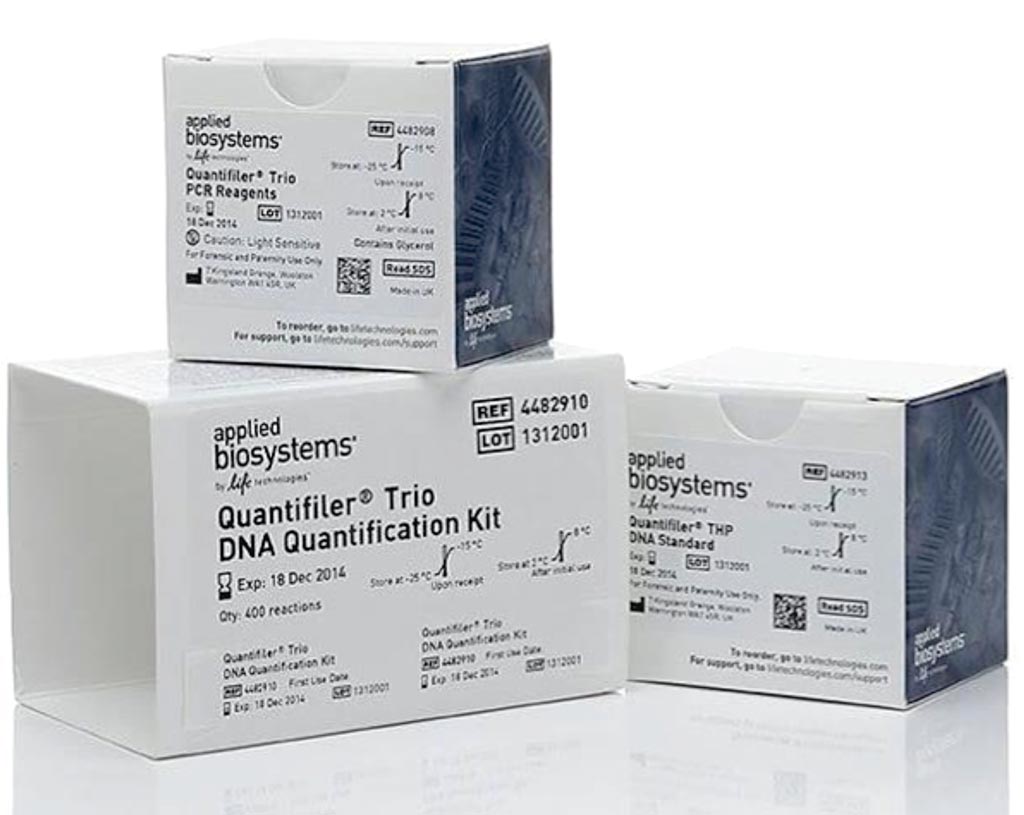New Assay Predicts Cancerous Pancreatic Lesions
By LabMedica International staff writers
Posted on 19 Dec 2017
A new simple molecular test has been developed to detect chromosomal abnormalities, biomarkers known as telomere fusions, in pancreatic tumor specimens and pancreatic cyst fluids. This assay may help predict the presence of high-grade or invasive pancreatic cancers requiring surgical intervention.Posted on 19 Dec 2017
Telomeres are regions of repetitive nucleotide sequences found at the ends of chromosomes that, under normal circumstances, keep the chromosome intact. When telomeres lose most or all of their telomere repeat sequences, the ends can fuse, leading to cell death or chromosomal instability.

Image: The Quantifiler Trio DNA quantification kit (Photo courtesy of Thermo Fisher Scientific).
Scientists at Johns Hopkins University School of Medicine (Baltimore, MD, USA) obtained intraductal papillary mucinous neoplasms (IPMN) tissue and cystic fluid from patients undergoing pancreatic resection from 2004 to 2015. Frozen sections of 93 primary resected IPMNs, any adjacent adenocarcinoma, and adjacent normal pancreas tissue were obtained from fresh-frozen tissue blocks created in the surgical pathology suite shortly after the resection specimen was received and mounted onto membrane slides for subsequent laser capture microdissection. Genomic DNA was also isolated from 60 pancreatic cancer xenografts established from primary pancreatic adenocarcinomas resected.
The team grew different cell lines, and performed laser capture microdissection. Whole-genome amplification was conducted for several cell line DNA samples and quantified with Quantifiler. The scientists also designed a nested real-time quantitative polymerase chain reaction (qPCR) assay. Telomere length was determined as the relative ratio of telomere repeat copy number to a single copy gene copy number (T/S ratio) with the use of real-time qPCR with minor modifications. Quantitative PCR was performed by using an Applied Biosystems 7900HT thermocycler.
This telomere fusion assay was able to identify telomere fusions in more than half of the pancreatic cell lines. Telomere fusions were often detected in tumors with high-grade dysplasia (containing more abnormal cells). Telomere fusions were not found in normal pancreas or samples with low-grade dysplasia. Similar findings were seen in analyses of cyst fluid, in which the presence of telomere fusions raised the likelihood of high-grade dysplasia or invasive cancer six fold. The telomere fusion events were found to be associated with high telomerase activity (an enzyme that lengthens telomeres) and shortened telomere length.
Michael Goggins, MD, a professor and senior author of the study, said, “We have developed a simple molecular test to detect telomere fusions. This telomere fusion detection assay is a cheaper method for evaluating pancreatic cyst fluid than many next-generation sequencing approaches that are being evaluated for this purpose.” The study was published on December 8, 2017, in The Journal of Molecular Diagnostics.
Related Links:
Johns Hopkins University School of Medicine














